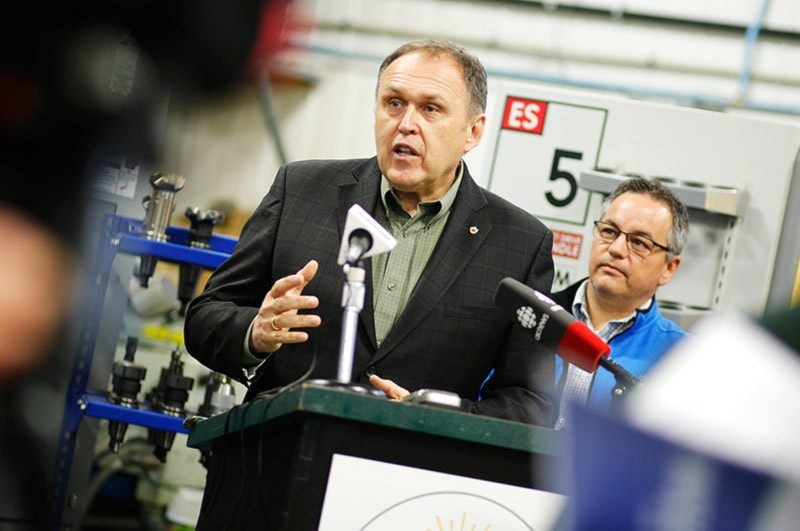For every Yukoner outraged by the territorial government’s botched handling of the Peel watershed plan, there are probably many more who are simply puzzled.
Why wait until the 11th hour of the planning process to say what you’d like, when it was not exactly a secret that the Yukon Party favoured allowing miners to have their way with the region?
And then why discard seven years of planning talks, knowing that this would provoke a lengthy court battle with affected First Nations and cast legal uncertainty over any development in the region?
In short, why punch yourself in the face, repeatedly, now and for many years to come?
The full story to all of this will probably never be told, because the politicians involved are unlikely to ever give a candid version of events. So here’s our best stab at it.
The Yukon Party’s brain trust must have decided early on that it was politically expedient to kick the can down the road when it came to making a decision on the Peel. Rather than say something of substance about what they wanted to do with the watershed, and deal with the inevitable backlash, it was much easier to make some vague comment about the importance of respecting the Umbrella Final Agreement and leave it at that.
After a while, all this can-kicking became something of a habit, until they ran out of road.
This sounds dense. And it is. But the Yukon Party is not exceptional for drawing out difficult political decisions - consider how our world’s governments dither when it comes to addressing big issues like climate change.
Also remember that our premier during much of the planning process, Dennis Fentie, had plenty else on his mind other than the Peel watershed during the end of his reign.
His trusty lieutenant, Brad Cathers, had quit cabinet in a spat over the premier’s covered-up plans to privatize Yukon Energy. Conservative stalwart Willard Phelps was busy blasting Fentie for being a “tinpot dictator.” As Fentie struggled to keep a growing rebellion at bay, he likely did not see the value in also setting off a big fight over the Peel.
It nevertheless remains bizarre that the Yukon government said as little as it did during the planning process. What’s more, territorial officials and our resources minister of the day, Patrick Rouble, insisted it was their obligation under the Umbrella Final Agreement to not say anything too specific.
Well, we’ve read the UFA and can’t find any passage to support this interpretation, so we suspect this all amounted to a dodge that was convenient at the time. This view is shared by Thomas Berger, the esteemed aboriginal law expert who is helping to represent affected First Nations in their lawsuit against the territory over the Peel plan. Berger holds that the time for the territory to share its views was during the planning process, and it squandered the opportunity.
Our present cabinet likes to make it sound as if they spelled out where they stood on the Peel during the territorial election. But, up until the halfway mark of the campaign, Premier Darrell Pasloski stuck to the old Yukon Party script, insisting it would be irresponsible for him to take a stand on the Peel watershed. Yet he later did take a position, warning that protecting the watershed would set off an avalanche of lawsuits from miners with claims in the region.
By Pasloski’s own reasoning, it was irresponsible to show his cards as he did. But we think it’s more likely that this “irresponsible” line was just another excuse to avoid having to say what he meant. It wasn’t true when Fentie or Rouble said it. It wasn’t true when Pasloski said it, either.
Not that it fooled anybody. After all, the Fentie regime suppressed information on the watershed’s ecological value during planning talks, and welcomed with open arms meetings with mining lobbyists while snubbing wilderness outfitters who wanted the area protected from development. Heck, as early as 2009, top officials with the territory’s oil and gas branch concluded it wasn’t even worth reading the commission’s recommendations, because there was no way the government would approve such a conservation-minded plan.
Later, after the election, the Pasloski government unilaterally wrote its own plan, which misleadingly labels areas as wilderness that would be open for development. It nearly offers the opposite level of protection as proposed by the planning commission - just 29 per cent would be off-limits to new staking, compared to 80 per cent - yet the government maintains it is merely “modifying” the previous work. And whereas a key feature of the commission’s plan was its vision to keep large blocks of wilderness intact by banning roads, the government’s plan could allow roads throughout the whole region.
Yet we’re assured this is a plan for everybody, too. No wonder many people aren’t buying it.
